Recently, we have been exploring the work of Dame Elisabeth Frink, as part of our project to catalogue the Frink collection held at Dorset History Centre. However, Frink’s is not the only collection of artistic material we hold…
—
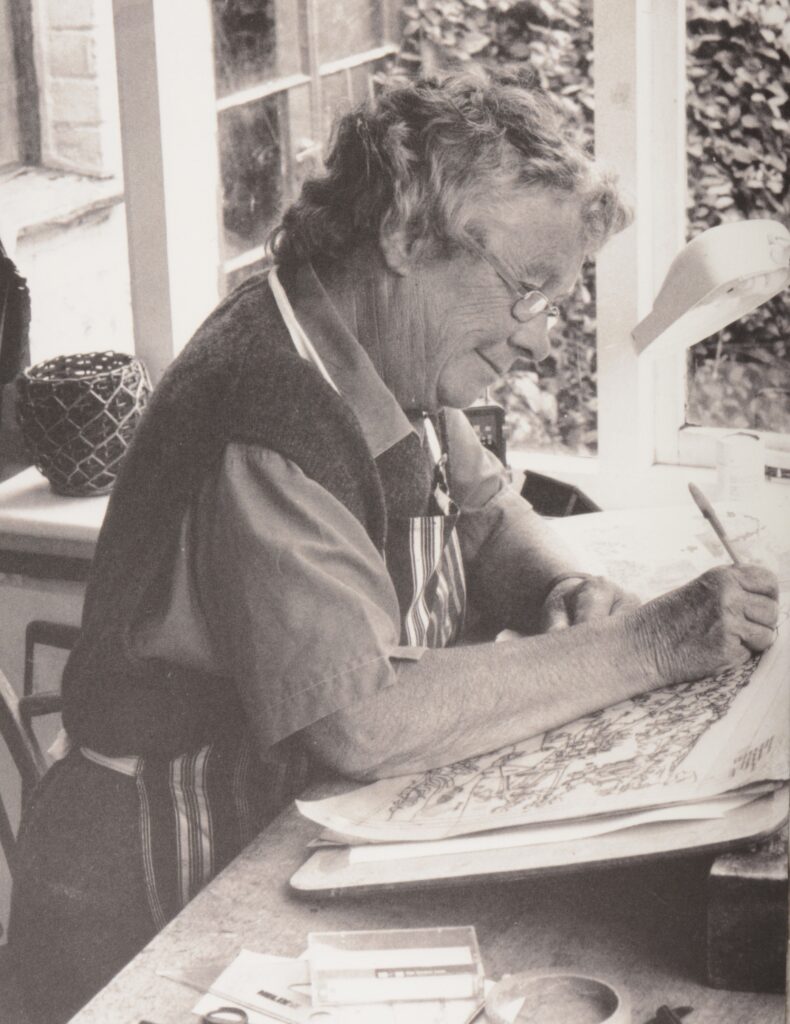
“It is a quiet region, without drama in either landscape or architecture; yet although each of the villages has a similarity of setting, they are quite different in character and appearance. All use the local materials – flint, cob, green and heath stones, brick and thatch – in an infinite variety of shapes and patterns. […] The hotch-potch of materials, mellowed by lichens and time, warmed by sunlight, can look enchanting. Apart from the ghost of Eastbury House, there is not a mansion in the valley and few large houses. The churches generally are unpretentious buildings, somewhat over restored. Lacking excitement it is, nevertheless, a delightful place to live.”
This is a quote from one of Rena Gardiner’s guidebooks on Dorset. Rena Gardiner had a unique and very distinctive style of illustrating. She was best known for her guidebooks and designed and crafted the whole process, by hand, from the initial sketches through to the completed book. Looking at them now her illustrations are very typical of the period, however the handmade, artisan approach to her work has recently experienced a resurgence. She bridged the gap between studio print and commercial production.
Inheriting her father’s love of technical drawing and anything mechanical at the age of 17 she went to study graphics and illustration at Kingston School of Art.
Rena moved to Dorset in 1954 where she took up a teaching post at Bournemouth School for Girls and would commute from her cottage in Wareham to Bournemouth on her red Lambretta scooter. She fell in love with Dorset and would spend many happy hours sketching the buildings and landscapes of the county. She would use an old mangle to make her prints in the early days and set up her first workshop, “Workshop Press”. Running out of space in her cottage in Wareham she moved to Tarrant Monkton in 1965 where she remained until her death. When the school moved premises in 1960 from the old red brick building in Landsdowne to the new campus in the north of the town she was commissioned to paint a thirty-foot mural depicting the old school. This is still there.
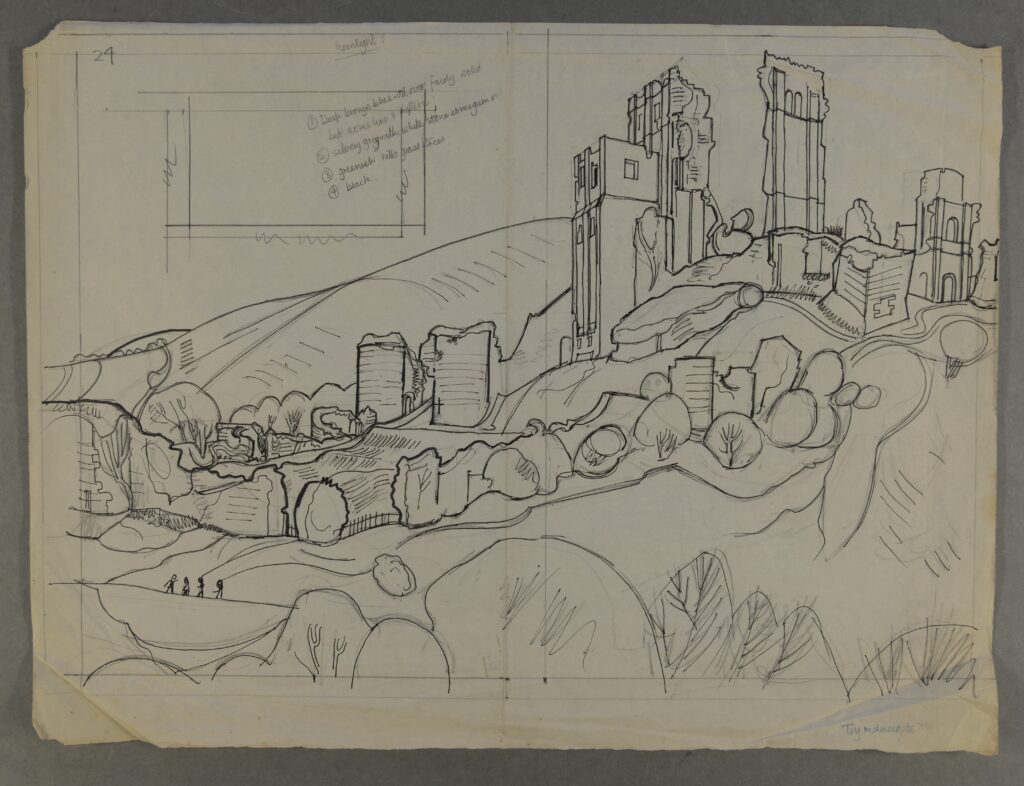
The primary technique she used was autolithography. This is a process when the drawing is taken from the original sketches and transferred on to clear film and then on to a metal plate. Rena did not work from a completed drawing. She used her judgement to build on the layers of hand mixed colour.
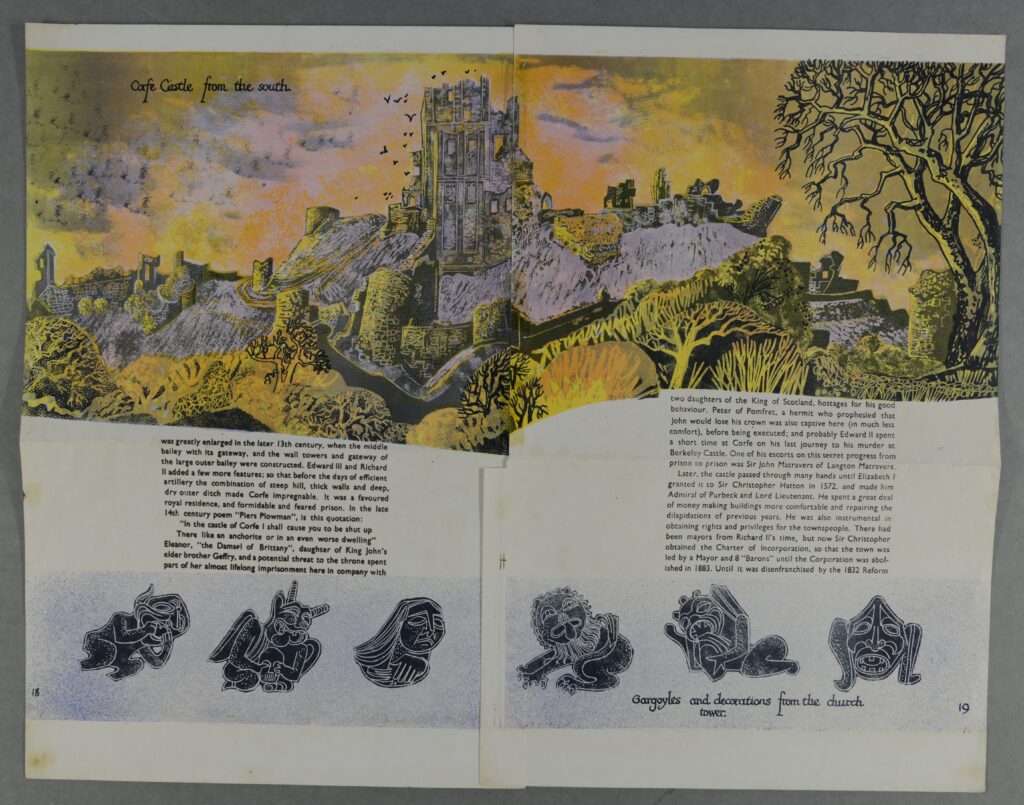
She was probably best known for the many guidebooks she made, and her largest client was the National Trust, but she also produced many lithographs and linocuts of buildings and landscapes from all over the country and of her travels in Europe.
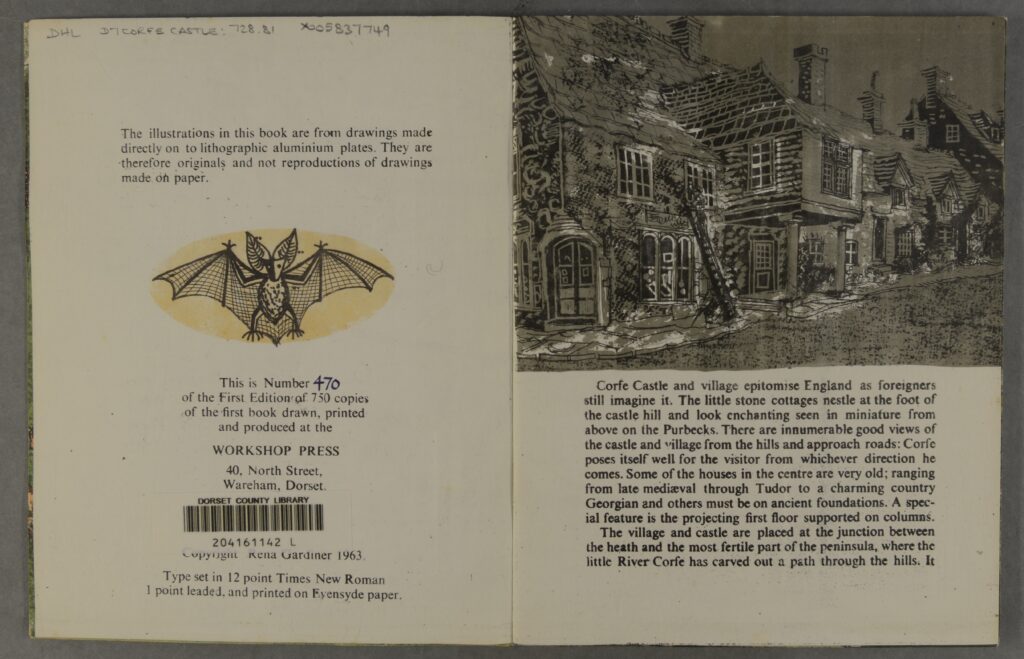
Her archive held at Dorset History Centre reveals not only examples of her work but also the whole process from the original sketches, the drawings on film, the metal plates and the linocuts. We also have examples of the completed books in Local studies. Her books are now highly sought after and collector’s items.
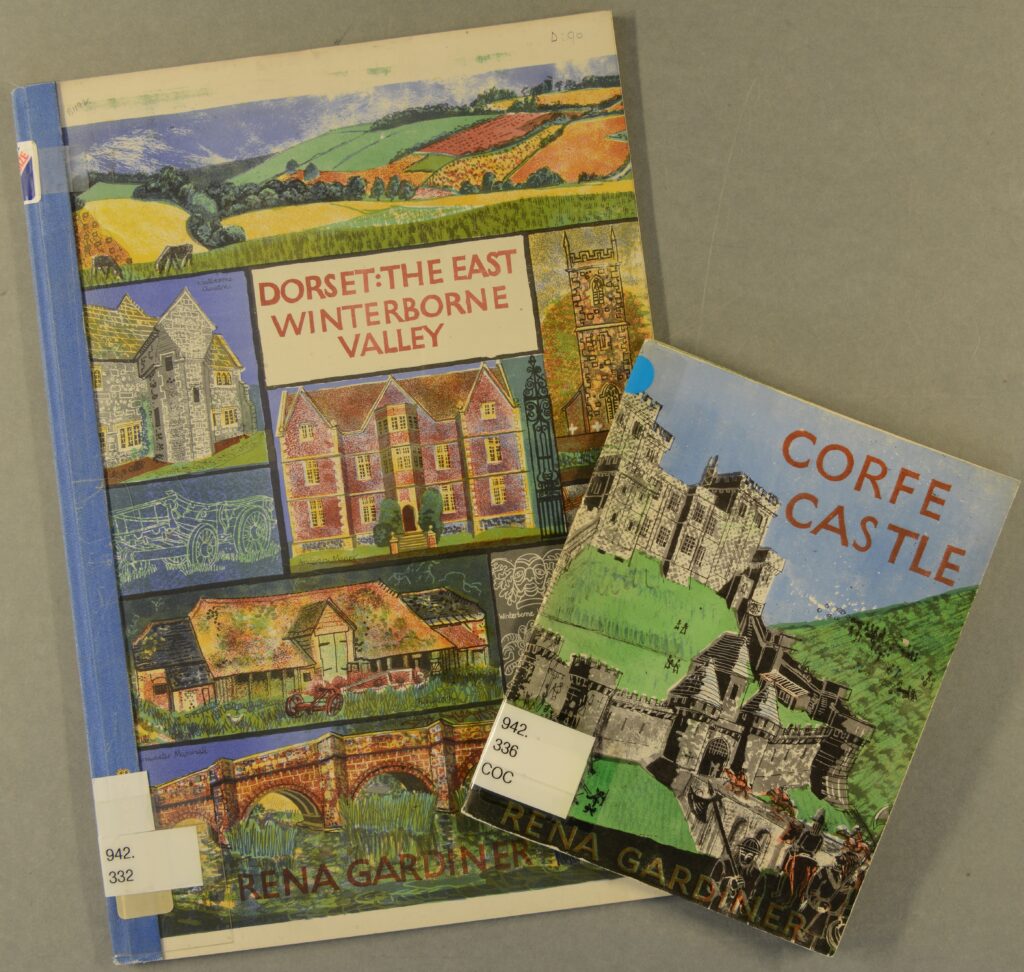
The Rena Gardiner Collection is held at DHC and, whilst it is not fully catalogued, it comprises of various preparatory drawings, transparencies, printing plates and lino cuts. We also have a collection of her publications and correspondence.


Is it possible to view the Rena Gardiner collection at the DHC? Would an appointment be necessary?
Hi Ann, thank-you for your message. You would be welcome to visit to view the Rena Gardiner collection at DHC – please can you send us an email (archives@dorsetcouncil.gov.uk) or give us a call on 01305 250550 during our opening hours (Wednesday-Friday, 9am-5pm; first Saturday of each month 9am-4.30pm) to make an appointment.
I have a limited edition print 2/19 by Rena Gardiner from 1998 that I would like to find some information on.
Is there anyone that would be able to point me in the right direction ?